Lithium battery makers in Europe are working hard to localise production and meet EU regulatory goals while protecting their supply chains from geopolitical disruption. Marcus Williams talks to Basquevolt, Inobat and LG Energy Solution about the state of play.
Localised battery cell and finished battery manufacturing in Europe is a priority for the automotive industry based there. The region needs around 50 gigafactories over the next decade if it is to establish its own battery EV supply chain and hit EV production targets.
However, there is much ground that needs to be made up to transform the region into a competitive battery and EV production location.
European carmakers are investing heavily to make their vehicles and operations emission-free in line with strict government legislation on carbon neutrality by 2050. However, they are lagging behind Chinese EV makers in the establishment of an end-to-end, battery electric vehicle (BEV) supply chain. Those Chinese carmakers are now targeting Europe with battery EV exports for consumers and fleet sales.
China benefitted from its move into mass production of battery-powered consumer electronics from Japan and Korea in the 1990s, and from its investment in the mining and refining the rare earth metals needed for battery production. Likewise, it is in the lead in terms of the battery production line equipment manufacturing. With strong government backing it used these advantages to leapfrog the west in automotive production as the transition to electric powertrains gathered pace.
“Europe is late to the party,” says Andy Palmer, chairman of Inobat. “From a geopolitical point of view it’s important we have indigenous manufacturing to secure the supply chain and to reduce logistics emissions.”
That is already happening in North America. The US can already claim Tesla as its own but has now invested billions in wide-ranging legislation aimed at making itsel a self-sufficient (and sustainable) producer of lithium batteries and EVs, even down to the mining of the metals. That is not the case in Europe yet.
Catch up in Europe
That said, there is now momentum in Europe and a number of prototype and full production battery plants are being established, and leading carmakers are building pure EV manufacturing plants, in close collaboration with those battery makers.
Volkswagen Group’s battery division PowerCo is building two gigafactories in Europe, one in Salzgitter, Germany and another near Valencia in Spain. It is also building a gigafactory in Canada.
Northvolt is already supplying Volvo production in Sweden and Belgium from its Northvolt Ett plant in Skellefteå, northern Sweden. In terms of stronger vertical integration, Volvo has also set up a joint venture company with Northvolt called Novo, and construction on a gigafactory is underway in Gothenburg, near the Volvo plant. The gigafactory will be begin production exclusively for Volvo in 2026. The new 50 GWh plant will make battery cells specifically developed to be used in next-generation pure electric Volvo and Polestar cars.
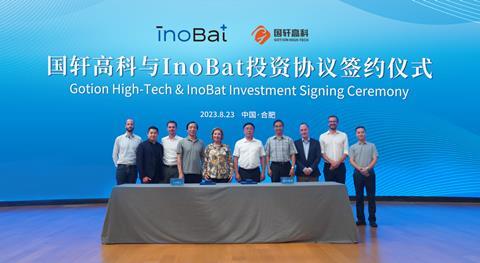
Automotive Cells Company (ACC), of which Stellantis, Mercedes-Benz and TotalEnergies are key stakeholders, has opened the first of three planned European battery gigafactories in Billy-Berclau, Douvrin, France. The gigafactory has an initial production line capacity of 13 gigawatt-hours (GWh), rising to 40 GWh by 2030. With the installed capacity to produce 56,000 battery cells per day, or more than 2.4m battery modules per year, it will be able to supply batteries for between 200,000 and 300,000 EVs annually.
Samsung SDI also has plant in Hungary, run under the SK Innovation division. Envision AESC’s will open a second 12GWh gigafactory plant in Sunderland UK in 2024. Nissan, which already builds the Leaf EV at its Sunderland plant, has confirmed it will also be the site for production of all-electric versions of Qashqai and Juke, as well as the next-generation Leaf.
Carmakers and their battery makers are supporting the nascent battery supply chain with logistics strategies that aim to be as sustainable as the vehicles being produced.
At the same time, longer supply chains are subject to a range of disruptions meaning a localised supply chain promises greater resilience, albeit with a reliance on longshore rare earth metal sourcing, which continues to test principles of ethical and social governance.
Take off in Slovakia
Aforementioned Inobat, which develops and manufactures batteries for passenger and commercial vehicles, motorsport and aerospace sectors, has started pilot battery cell production at its Volta I research and development (R&D) facility in Volderady, Slovakia. The facility is producing low volume prototypes. The Volta II 4 GWh facility, also based in Volderady, which is to come online at a later date, is described by Palmer as serving customers manufacturing vertical take-off and landing (VTOL) craft, including Lilium, which is Inobat’s first customer. Mass GWh facilities are to follow in Slovakia and Spain.
Gotion High-Tech, which supplies the Unified Cell due to be installed in up to 80% of all VW Group’s future EVs, holds a 25% stake in InoBat. It will contribute resources and manufacturing know-how to ramp-up the capacity at InoBat’s Volta II plant.
“We are adopting a vehicle manufacturing approach to supply chain management, ensuring we have both contractual and practical control over our supply chain,” says Palmer. “Our relationship with Gotion, a global manufacturer of battery cells, is very helpful.”
Palmer says Inobat aims to become one of the few indigenous European manufacturers of battery cells, concentrating chemistries for specialist applications.
Solid-state plans
Basquevolt, based in Vitoria-Gasteiz, Spain, is another indigenous European battery producer that is ramping up activity to become a leading producer of solid-state batteries. Its CEO Francisco Carrenza concurs with Palmer that Europe is currently lagging behind everyone else but Basquevolt, like Inobat, is now working on prototype production. Its own facility is located at the Álava Technology Park near Miñano.
Basquevolt is making its own electrolytes, the solid ionic conductor and electron insulating material, which is the characteristic component of the solid-state battery. Cathode material is being supplied from Asia, predominantly from China and Korea, while the lithium metal anode it uses is coming from the US and China. There are currently no suppliers in Europe at the moment.
“Even with the cathode, if we are talking about a European company, the R&D team who know about the future technology are not here, they are in South Korea,” says Carrenza. That is why the cathode we use is produced in Korea.”
The company is working with Telefónica and Siemens on integrating digital processes into its prototyping line to make eventual full production more efficient. Carrenza says the first step in understanding its production process is to have reliable data
“That is the first layer we have put in place with Siemens and Telefonica,” he says. “After that we need to figure out how we can make the process more efficient by using that data and knowledge. That is something that we are starting now.”
Carrenza says the task is challenging, in part because every piece of equipment is coming from a different supplier.
“That is part of what our digital team is working to put together, creating a detailed scheme of all the machines and the process to make sure we can improve the overall efficiency by better understanding what is going on.”
With regard to the production line, Carrenza points out that there are no suppliers in Europe capable of making good quality production equipment for automotive batteries.

“There are a few that can do laboratory equipment but not the big scale equipment required for automotive,” he says. “China and Korea have not competitor in Europe. The Chinese firms are very efficient and have a very short delivery time. They are also very competitive in terms of price and in some cases you can see a 30% price difference.”
Shorter delivery times and significant reductions in price mean it is game over for any competitor, according to Carrenza. However, Basquevolt has announced a collaboration with Schneider Electric and Comexi, which will work on the development of high-precision machining for finishing batteries. The aim of the project is to strengthen the European battery supply chain against Asian competitors. Currently, European battery makers are importing battery production line equipment from Chinese and Korea suppliers.
The agreement with Schneider Electric and Comexi has been drawn up in the framework of the Upcell Alliance, of which all three companies are members and whose main objective is to strengthen the competitiveness of European manufacturers of electric batteries.
Inobat has addressed the need for the right production technology to make its cells through an agreement with Wuxi Lead.
“We have purchased equipment from Wuxi Lead, who we consider to be the most experienced [supplier], and the best from a quality, cost and delivery point of view,” says Palmer. “This reduces risk and time to market.”
Planning ahead
Carrenza says now is the time to think ahead. “We need to plan for what is coming next, not just design the supply chain as a reaction to the fact China is a lot more efficient than us and reacts much earlier than us.”
That includes looking beyond the materials currently used in lithium-batteries. Carrenza points out that graphite has a negative impact on the environment and is inefficient to produce, therefore it makes little sense that anyone should invest in it now. Similarly, there are very few European producers of cathode material, while there is a surfeit in China.
“Overall, I do not see how the establishment of a supply chain based on existing materials would be financially viable,” says Carrenza. “I don’t see how anyone can be profitable by making cathodes or anodes.”
Battery materials are also a consideration from a logistics point of view. The rules governing the shipment of batteries, which are a Class 9 dangerous good, are well regulated in Europe and Carrenza says it follows the standard packaging and certifications required.
“In principle, some solid-state batteries with the polymer electrolyte we have are safer than a conventional [battery], so we are going to be on the safer side of the spectrum, though the regulatory framework is the same and we follow the European standards on that.”
Polish heart of battery chain
Non-indigenous battery makers are also gaining ground in Europe, notably those from Asia.
They include South Korea’s LG Energy Solution. Its battery plant in Wrocław, Poland is currently Europe’s biggest producer of lithium batteries for passenger and commercial vehicles, with a current annual production capacity equal to 86 GWh and a goal to reach a maximum of 90 GWh by 2025. LG Energy Solution is also currently the largest foreign investor in battery manufacturing in Poland according to the Polish Investment and Trade Agency, contributing 3% to Poland’s GDP. According to the company, Poland is now rapidly becoming the heart of European battery business and its role in the battery industry is poised to grow further, contributing to both its own economic development and Europe’s sustainable energy future.

Along with friendly foreign-investment policies, a skilled workforce and a strong base for research and innovation, there are distinct logistics advantages of being near customers in Germany and France, as well as wider Europe, according to the battery maker. Those OEM customers include Audi, BMW, Fiat, Ford, Porsche and Volkswagen. LG Energy Solutions also boasts an extensive supply chain and proven contractors.
“LG Group was already operating the LG Cluster in Kobierzyce Commune near Wrocław, where numbers of LG Group’s affiliate companies and partner companies run production lines, so utilising the group’s existing infrastructure was also part of the plan,” says a spokesperson for the company.
LG Energy Solution has also recently signed a multi-year battery module supply agreement with Impact Clean Power Technology (ICPT), a global supplier of heavy-duty battery systems for public transport. It will supply ICPT with around 200,000 battery modules for electric bus application for three years. ICPT will assemble the supplied battery modules into battery packs, and supply them to their customers.
Ethical sourcing
LG Energy Solution says responsible sourcing is vital to the ongoing success of its business. The company and its subsidiaries require all suppliers to comply with the Responsible Sourcing Policy and the Supplier Code of Conduct, which is embedded into the general terms and conditions. It says these policies are aligned with internationally recognised standards and frameworks, including the Due Diligence Guidance for Responsible Supply Chains of Minerals from Conflict Affected and High-Risk Areas, issued by the Organisation for Economic Co-operation and Development (OECD). It also follows the OECD’s Due Diligence Guidance for Responsible Business Conduct, the Guidelines for Multinational Enterprises, and the United Nations’ policy on Guiding Principles on Business and Human Rights.
The company uses third-party audits to ensure suppliers maintain business practices and records to verify compliance with its code. Given the complexity of battery supply chains, it uses a combination of a regular supplier evaluation processes for its direct or tier one suppliers, and due diligence screenings focusing on raw materials suppliers.
Further, with a view to enhancing transparency and traceability of supply chains, LG Energy Solutions says it is working to expand the scope of its supply chain, which necessitates clearly communicating expectations from suppliers, setting comprehensive policies and robust procedures, and reinforcing the chain of custody.
“Mapping of supply chains of all products is also being carried out and systematisation will follow,” says LG Energy’s spokesperson. “In doing so, supplier engagement and communication has played a pivotal role, as the level of their awareness and/or willingness to share the information is low.”
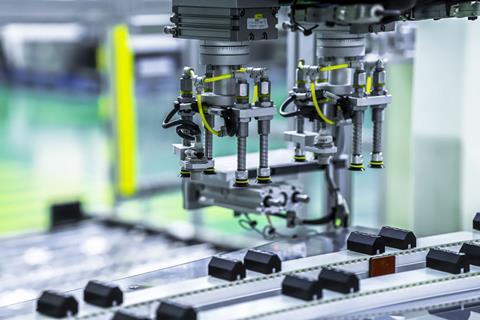
Supplier diversity
There is consensus that localised battery cell and finished battery manufacturing in Europe is a priority for the automotive industry based there. According to Carrenza at Basquevolt, it is all about risk management and the avoidance of exposure geopolitical conflict that puts the supply chain in danger. He says the industry needs diversified supply from countries that are politically stable.
Taking China as an example, Carrenza says that aggressive and retaliatory trade policy decisions will disrupt supply. “There is a long history of the Chinese government blocking the supply of components because someone made a specific political decision,” he points out. “You are at risk if your whole supply chain depends on Chinese players. The ideal situation is to have diverse supply from different players so you can put them in competition and mitigate the risk of [materials or services] becoming too expensive or government decisions in China impacting supply.”
Carrenza says Basquevolt’s purchasing team practice a fine art in balancing the suppliers and getting the risk under control.
LG Energy Solution says electromobility is the industry of the future and demand is bound to grow, driven by the Fit for 55 climate package directive. Fit for 55 is the EU’s target for reducing net greenhouse gas emissions by at least 55% by 2030.
“To respond to market demand, the European production capacity of EV batteries in general should gradually increase,” says LG Energy Solution’s spokesperson. “So, we have our hands full.”
As with other tier one battery suppliers in Europe, LG Energy says there is much ahead to overcome, including unstable energy prices and lack of infrastructure.
Automotive Logistics and Supply Chain Europe is taking place March 19-21 in Bonn, Germany. The conference will feature major OEMs, suppliers and industry experts discussing how to leverage logistics as a competitive advantage.
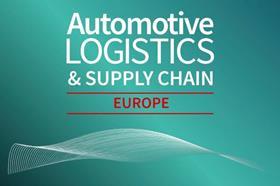





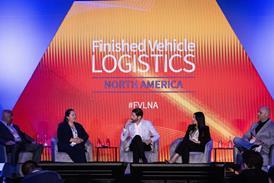
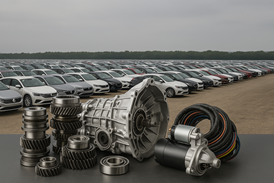




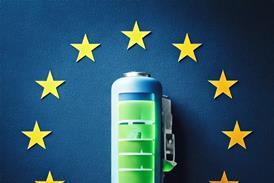




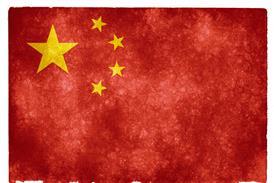
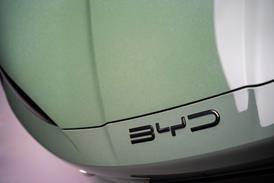
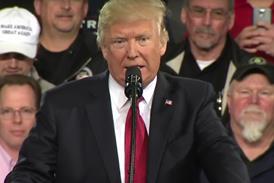






![Global[1]](https://d3n5uof8vony13.cloudfront.net/Pictures/web/a/d/s/global1_726550.svgz)

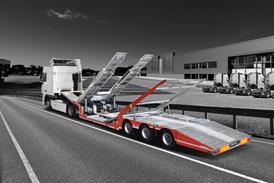

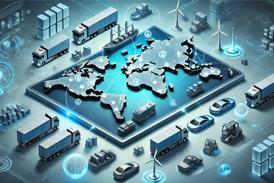
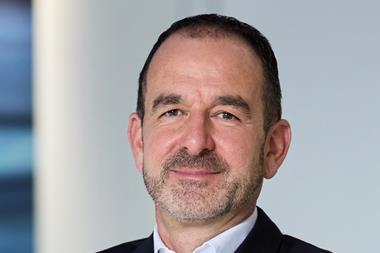
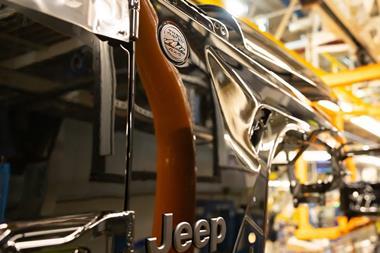
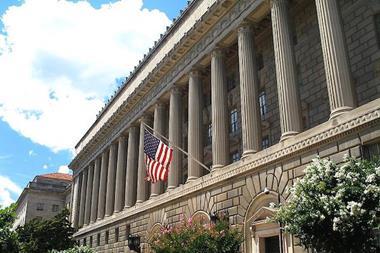
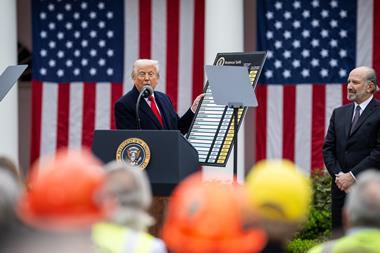
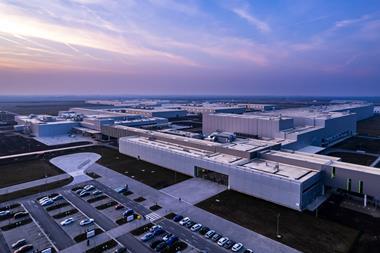




No comments yet